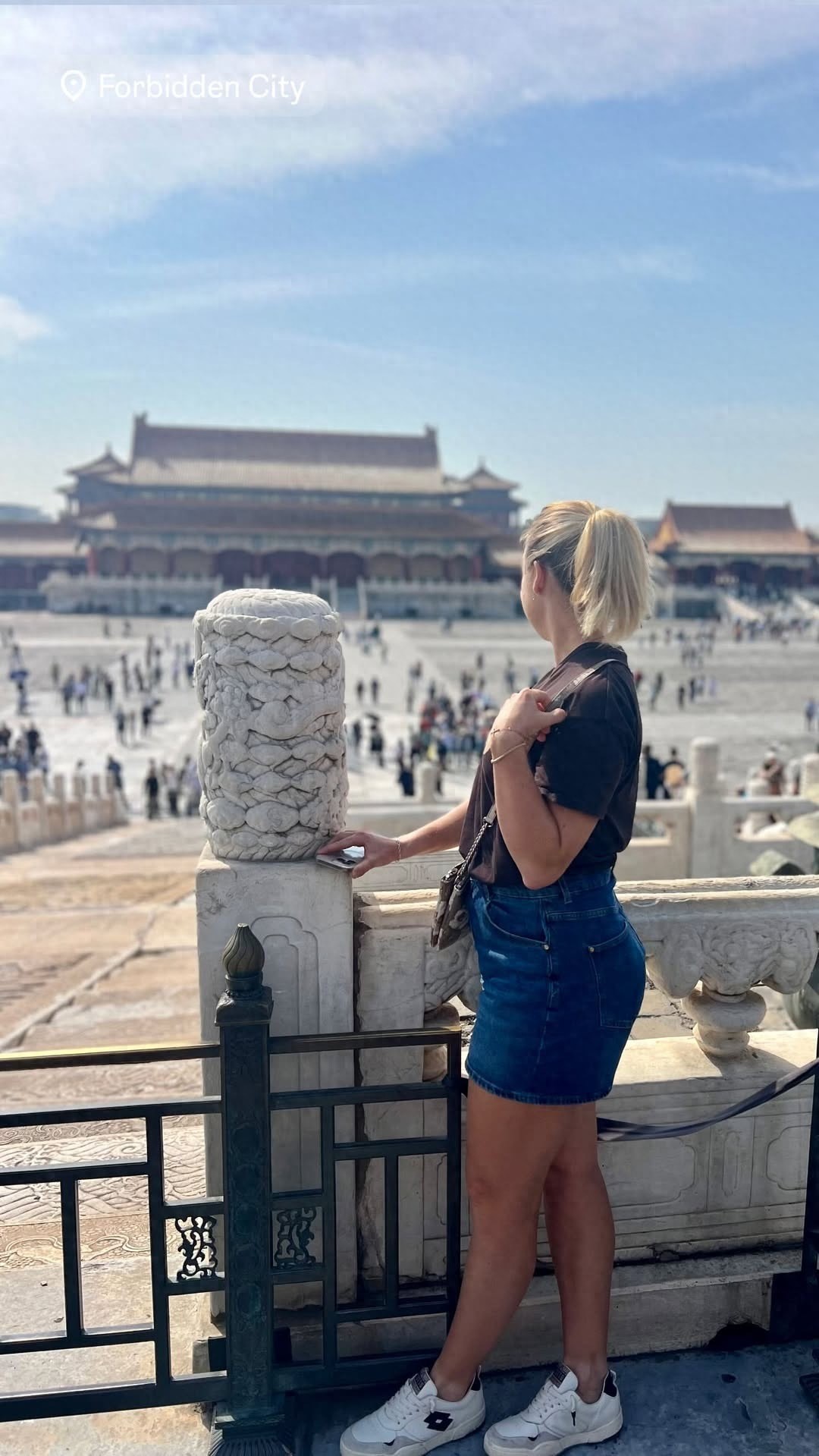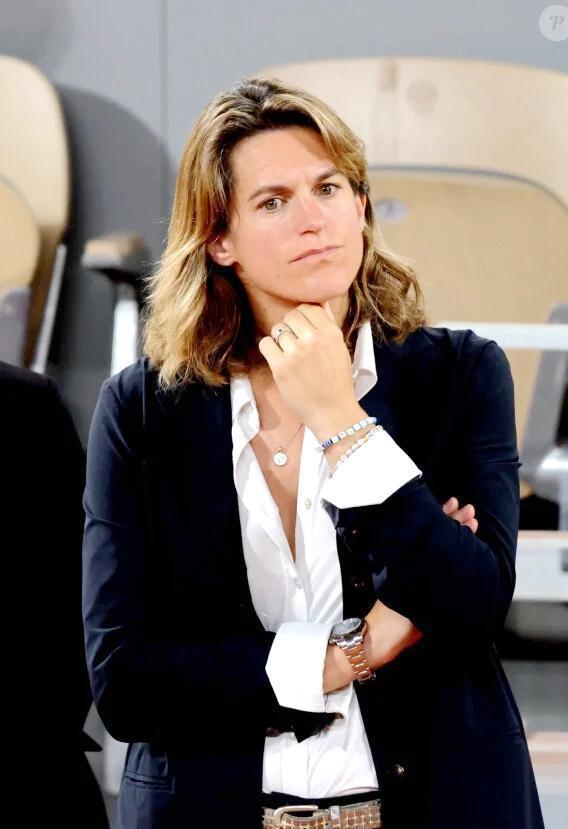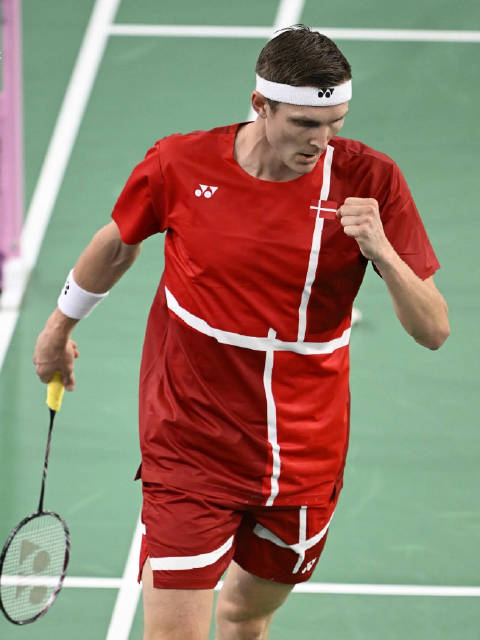Chinese Fluency: The True Test of Foreign Players’ Affection for China
“I am currently preparing for the China season in Beijing, and I would be very happy if I could communicate with Chinese people in their language. Maybe I can even give interviews in Chinese? I’m really looking forward to it,” Blinkova expressed in a recent interview. Unlike athletes who only use a few simple Chinese phrases to please Chinese fans, this multilingual Russian player’s motivation comes from a genuine love for Chinese culture.

At various international events held in China, foreign athletes commonly greet Chinese media and fans with “Nihao” and “Xiexie,” which have become almost standard. These simple Chinese phrases serve as diplomatic niceties—polite but superficial. Back in 2006, when French tennis star Mauresmo first competed in China, she learned to say “Nihao” to greet the audience and expressed her hope to hear more Chinese cheers during matches. Nearly twenty years later, such basic Chinese expressions remain the norm during the China season.

In stark contrast, Blinkova, fluent in seven languages, dedicates significant time and effort to learning Chinese. She not only masters everyday conversations but can also discuss complex topics such as training schedules and dietary preferences in Chinese. Anders Antonsen, the Danish badminton star, amazes with his fluent Chinese. He can handle daily communication easily and even quote classical texts like Mencius’ “When Heaven is about to confer a great responsibility on a man.” His motivation for learning Chinese is to deeply understand China and communicate with Chinese players.

Blinkova’s motivation for learning Chinese is equally sincere: “Why did I choose Chinese? Because I really like the sound of the language.” She comes to China every year to compete and has noticed that apart from event staff, locals generally have limited English skills, which made her realize the necessity of learning Chinese. This motivation, rooted in practicality and cultural interest, is far more enduring and genuine than simply trying to please. Blinkova recounted an experience at a hotpot restaurant: “The waiter yelled at me because I made many mistakes, and I had no idea what to do. So, if you don’t speak Chinese, you can get into trouble.” This life experience pushed her not only to learn the language but also to understand the cultural norms behind it.

The level of commitment to language learning can be objectively measured. Blinkova shared her study methods: “When I reached an intermediate level, I often used language learning channels on YouTube. For learning Chinese, I use Tiantian Hanyu (Everyday Chinese).” This systematic learning approach goes far beyond memorizing simple phrases. Antonsen has also put in tremendous effort: “During long drives and trips across Asia, we started listening to Chinese podcasts. I’m not afraid of making mistakes; I dedicate one to two hours every day to practice and try to have direct conversations. After a year, I built a solid foundation.” This investment of time and energy partly reflects a sense of identification with Chinese culture. Antonsen even gave his daughter a Chinese name, “An Weijia,” and started “Chinese early education,” hoping she will love Chinese culture as much as he does.

Language is not just a tool for communication but also a bridge for emotional connection. When Blinkova says in Chinese, “I also think Chinese people are very friendly, so I work hard every day to learn Chinese,” this spontaneous emotional expression is far beyond a perfunctory greeting. Li Ming, when discussing the standards for naturalized players, said that players must love China and appreciate Chinese culture. Although this applies to naturalized players, it also serves as a benchmark for foreign players’ feelings toward China. Those who only say “Nihao” and “Xiexie” may just be fulfilling a PR task. Players who can engage in deeper conversations in Chinese, like Antonsen who can even distinguish the pronunciation difference between “wall” and “court,” are more likely to have a genuine interest and affection for Chinese culture.

Antonsen has lost count of how many Chinese cities he has visited. He said in Chinese, “When I go to China for competitions, I can order food in Chinese, use ride-hailing apps, and chat with drivers in the car. It’s so convenient, it feels like coming home.” Blinkova continues her journey in China: “On Tuesday, we are going to Wuhan for the competition. Thank you, everyone.” Her Chinese learning is ongoing, driven not just by avoiding awkward moments at hotpot restaurants but by a sincere love for Chinese culture.

Foreign athletes who go beyond surface-level politeness and invest real time and effort into learning Chinese have demonstrated true recognition and affection for Chinese culture through their language skills.(Source: Tennis Home, Author: Xiao Di)







 Links
Links
 Contact
Contact
 App
App


